GlaxoSmithKline
GlaxoSmithKline is the oldest extant pharmaceutical company based in the UK, tracing its history back to 1715 London. We helped to Capture GSK's lengthy and rich history with a new internal website.
CMS, Information Architecture, Digital Design, Development, Accessibility

Introduction
The GSK Heritage Archives hold thousands of items collected throughout the company’s 300-year history. The archive needed to generate awareness about the history of GSK and its legacy companies, allowing GSK staff to search, explore and find digitised resources, while providing answers without physical visits to the UK and US archives.
"We're thrilled with the fresh look and seamless feel of our new website! It's modern, user-friendly, and truly captures the essence of our brand. The design team did an exceptional job bringing our vision to life." - Jill Moretto (Senior Information Governance & Heritage Archive Manager)
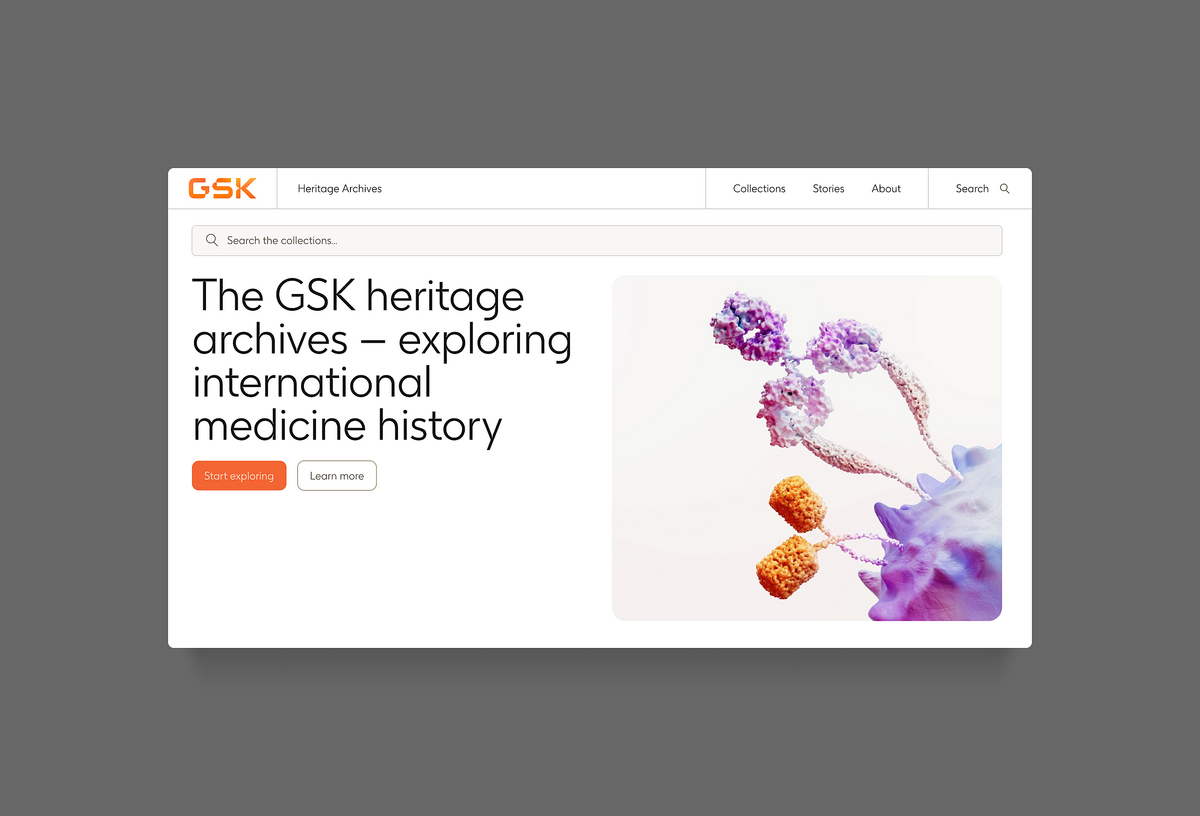
The audiences & our approach
As the Heritage Archives department had already been receiving requests for archival material, both from staff and external researchers, we gathered insights from these requests and developed four user personas that we used throughout the process in order to target design choices and functionalities.
Due to the nature of the archived objects, a large proportion of the collection doesn’t have accompanying visuals.
This proved a challenge not only to engage their audience with the content but also during the design process, which resulted in various solutions.
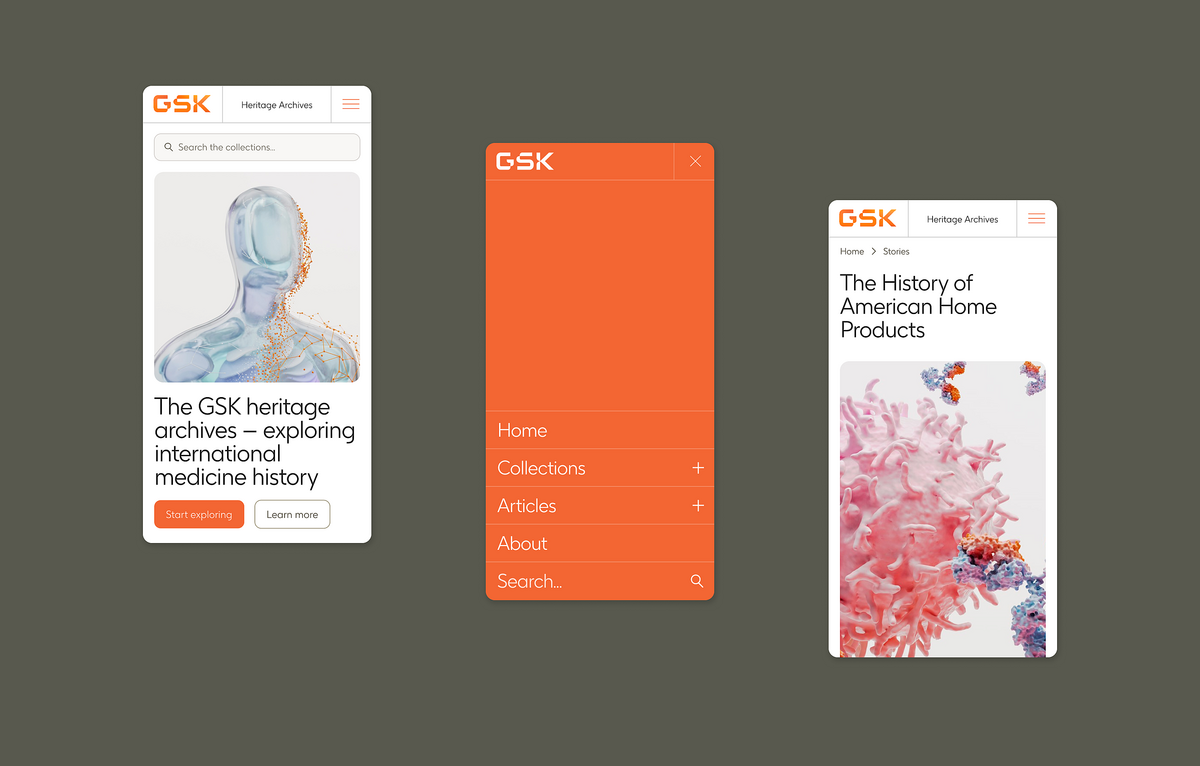
Searching the archive
The archive collection being the bulk of the site, we designed multiple entry points for users to access this wealth of content.
Through the homepage, users can type queries directly on a ‘Collection search’ bar, or browse through highlighted content curated by the archival team themselves.
The collection search page allows users to search, browse through an interactive hierarchy or browse curated themes. These allow for highlighted objects to be brought to the fore, and gives users an opportunity to be guided through parts of the collection.
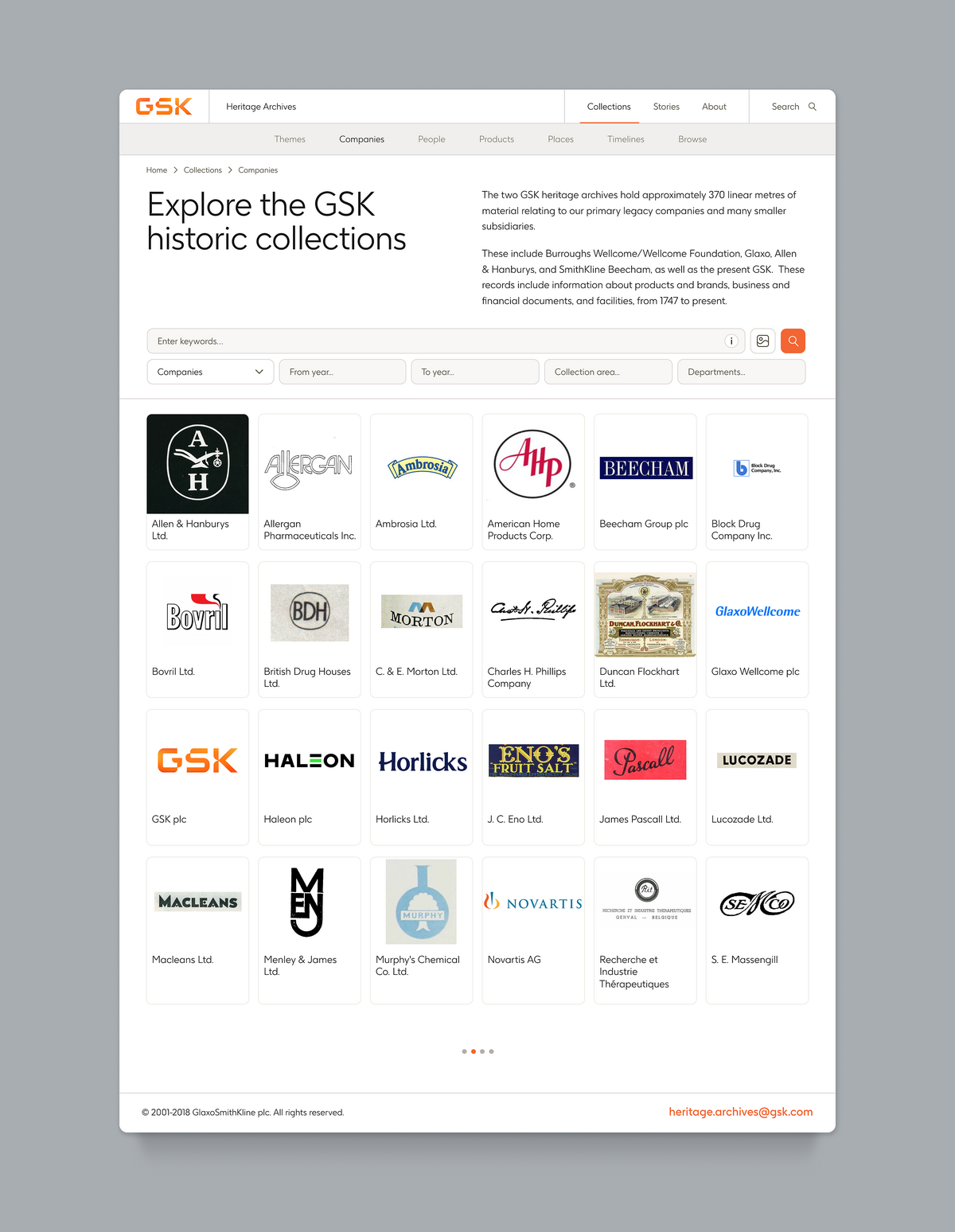
Browsing hierarchically
Users' search criteria are kept on the screen when browsing results, allowing to constantly refine search parameters. Users are able to sort their result order and switch between layouts (grid and row) to change the level of detail they wish to see.
The expandable hierarchy gives the user context to individual archive folders and their projects. When expanded, it adjusts the layout of the page so as to not overlay any content, and still allow the content to be readable and usable.
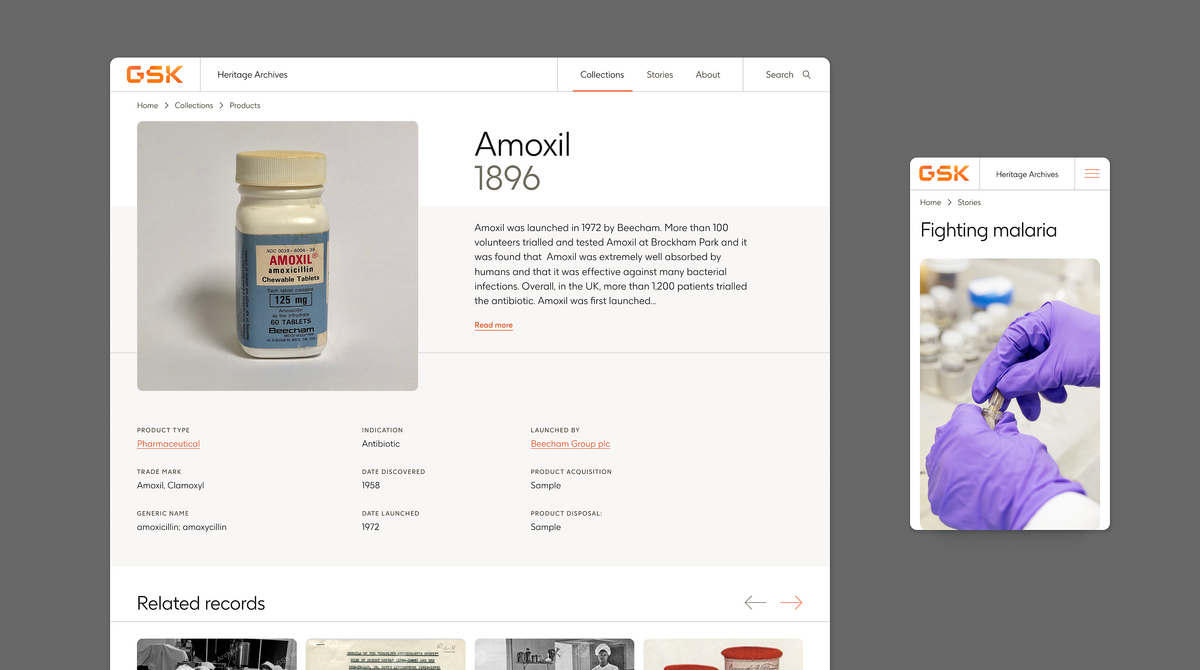
Map
An interactive map allows audiences to explore the global scale of GSK throughout history, with the ability to filter types of locations and date spans, revealing archival material and narrative pieces connected to the location.
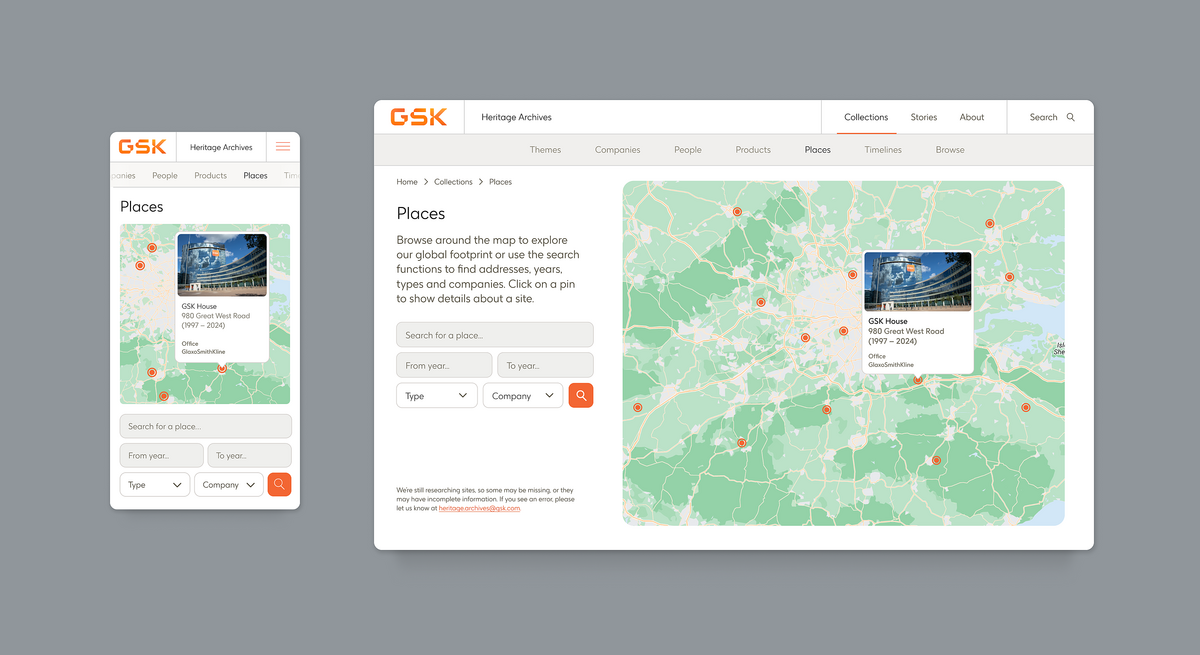
The team was also keen on encouraging asset discovery on the website and telling stories with curated content.
The new website serves as a hub for all GSK Heritage Archives, a digital resource preserving the company’s history, and allows company employees to find what they need without having to be handheld by the archivists.
The website also fulfils the users’ goals of finding specific materials necessary for day to day job duties: i.e. legal records, whilst allowing users to browse and discover the breadth and wealth of the company’s archive.
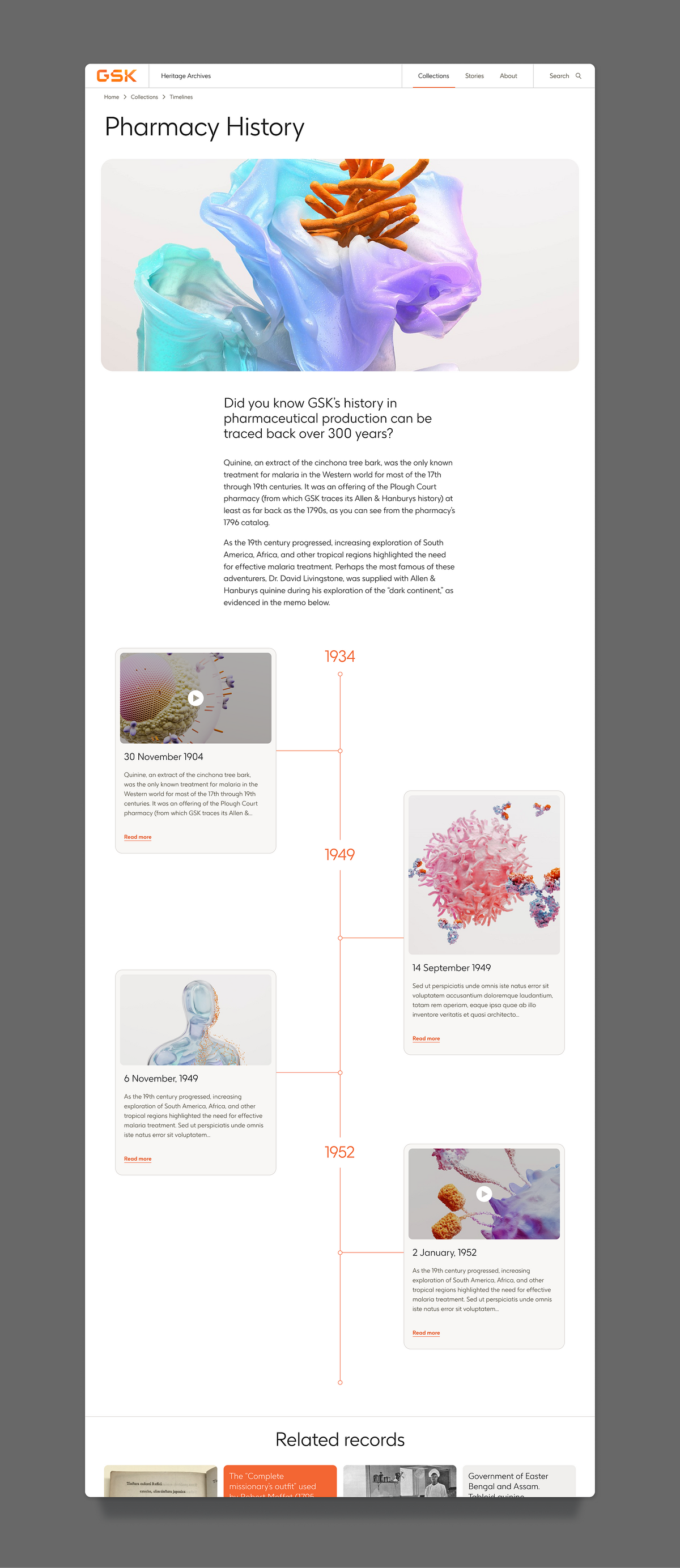
The integrated collection management and website solution have proven a great tool for the Heritage Archives team.
Having started managing their archival collection with spreadsheets, a solution like Qi greatly sped up the cataloguing work and continues to support the ongoing digitisation work by disseminating any newly digitised items, as the website and archive are completely synchronised with Qi.
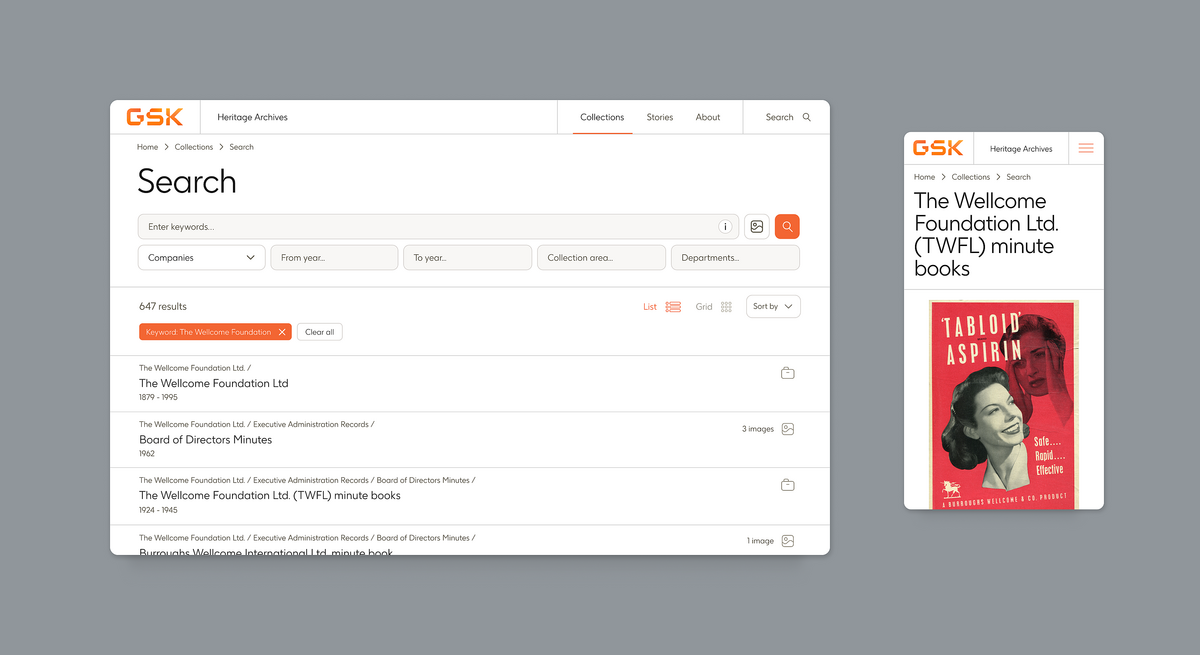
Related
The Sainsbury Archive
Documenting the history of a British supermarket founded in 1869
Coca-Cola Archives
Modelling a narratively-driven digital archive for one of the most recognisable brands in history
Unilever Archives
Constructing the digital landscape for one of the largest commercial brands through a public heritage portal